
Kohn Pedersen Fox has completed Terminal A of the Zayed International Airport in Abu Dhabi, UAE. Formerly named Abu Dhabi International, the new complex will serve up to 45 million passengers per year, doubling the airport’s previous capacity.
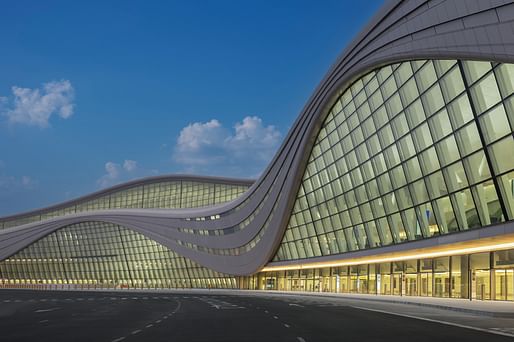
The design of the new terminal was informed by the country’s undulating desert sand dunes and the geometric patterns of Islamic heritage. Externally, the form was developed from a desire to provide shading for the interior without the use of external shading devices, which could be impacted by sand accumulation. Instead, the undulating form “drapes” over the facade, where high-performance glass is fritted in a graduated pattern to further mitigate solar glare.

As visitors approach the terminal, they are met with a 160-foot-tall, free-standing glazed facade, behind which sits a largely column-free departure hall. The hall’s supporting arches are visually separated from the roof to create the illusion that the ceiling is floating. To balance the monumental scale of the interior, the team designed a series of landmarks to help guide passengers.
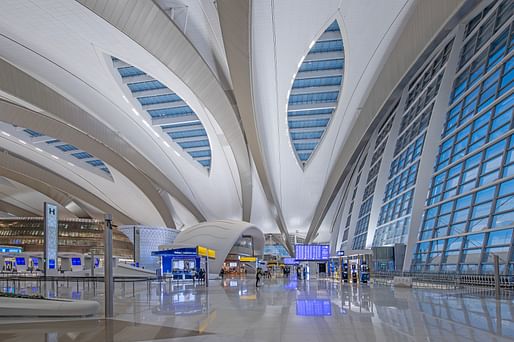
One such landmark is the Sana Al Nour, one of the largest indoor public art features in the Middle East. Inspired by traditional Islamic architecture, the 72-foot tall, 100-foot wide piece is formed of 1,632 individual curved leaves of translucent glass, designed by Carpenter | Lowings in collaboration with KPF. Meanwhile, a feature staircase linking the arrival corridor with the Arrivals Hall is described by the team as “an exciting first step in one’s journey to Abu Dhabi.”
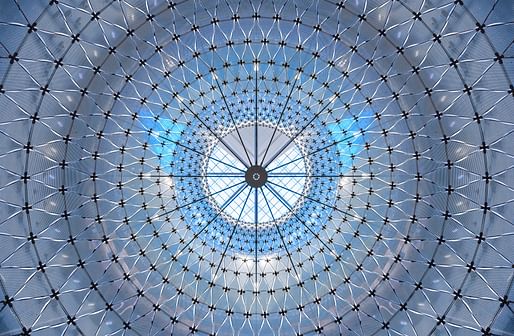
“From the outset, our goal was for the airport to serve the emirate and represent the city of Abu Dhabi, with a design that referenced its cultural and natural environment,” KPF design principal Mustafa Chehabeddine said about the scheme. “We established a design language for continuity and flow throughout the project, developing a set of guidelines that ensured each element of the terminal, from the check-in desks to the lighting chandeliers, felt as though it belonged in the building.”
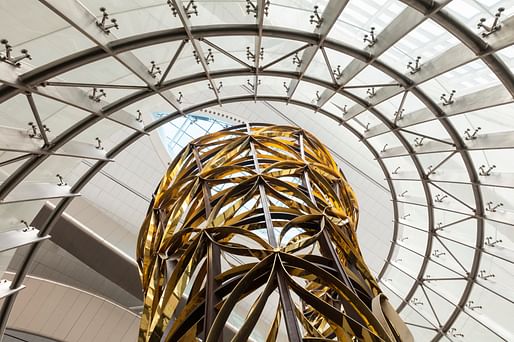
The terminal is designed as an X-shaped plan to reduce the average walking distance between points for travelers, shaped using parametric geometry modeling. To aid wayfinding, each pier of the X is themed, inspired by a different element of Abu Dhabi’s character: desert, sea, city, or oasis.
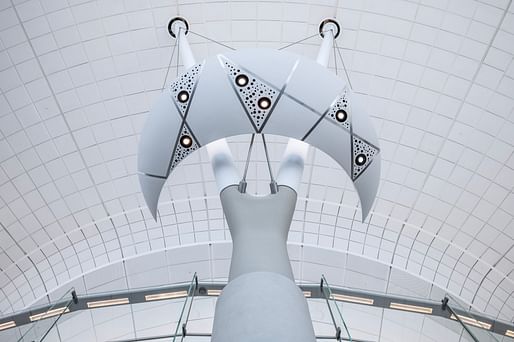
In an effort to future-proof the airport, the terminal has been designed with large-span, structural arches as opposed to a fixed column grid, in order to accommodate varied interior layouts. The terminal spans over 1,000 feet at its widest point, with the central roof supported by a series of paired leaning arches. Below, elements such as check-in infrastructure, emigration, and security can be adjusted on an as-needed basis.
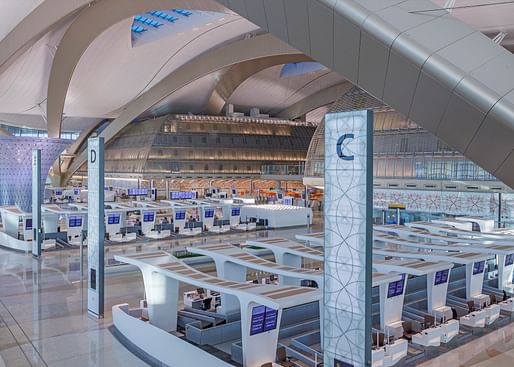
“Airport requirements are in a constant state of flux, as technology and security change,” Chehabeddine added. “As designers, we must address the need to adapt within the physical constraints of a terminal. At Terminal A, unprecedented flexibility is created by replacing columns with mega arches. The ideal form was researched using the latest technologies in modeling and structural engineering, to discover the optimum plan, spans, and layout. This solution produces some of the largest spans ever built in interior environments.”

News of the airport comes one week after KPF revealed further details on a supertall Midtown Manhattan tower defined by arched windows. In Miami, meanwhile, the firm’s Tower 36 office and retail scheme recently won approval for construction.
No Comments
Block this user
Are you sure you want to block this user and hide all related comments throughout the site?
Archinect
This is your first comment on Archinect. Your comment will be visible once approved.